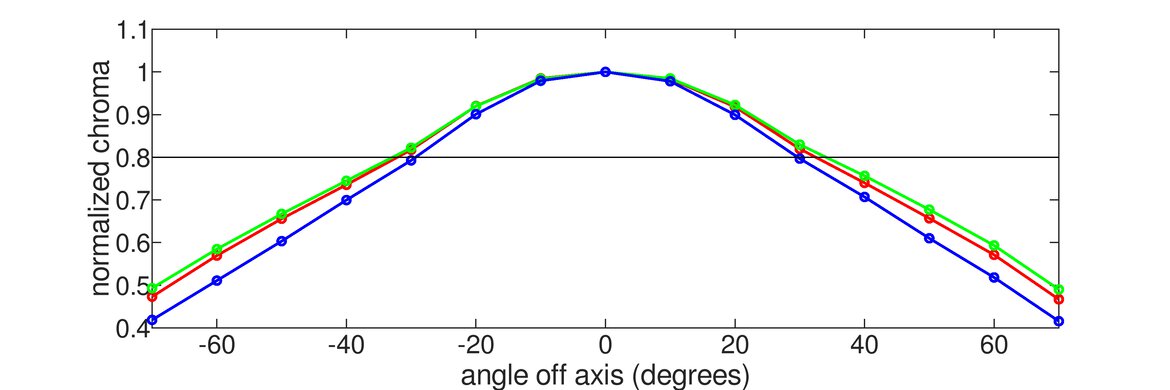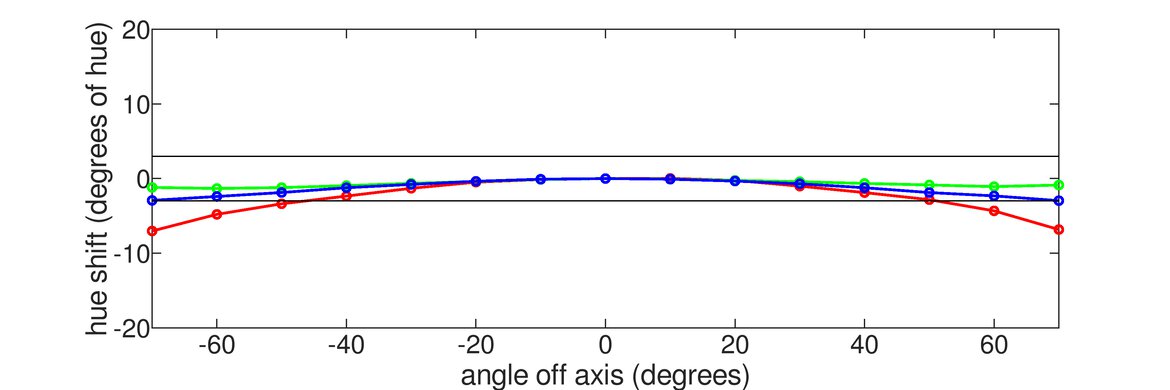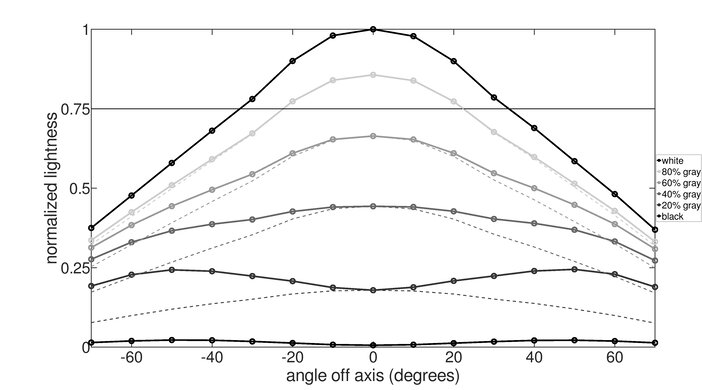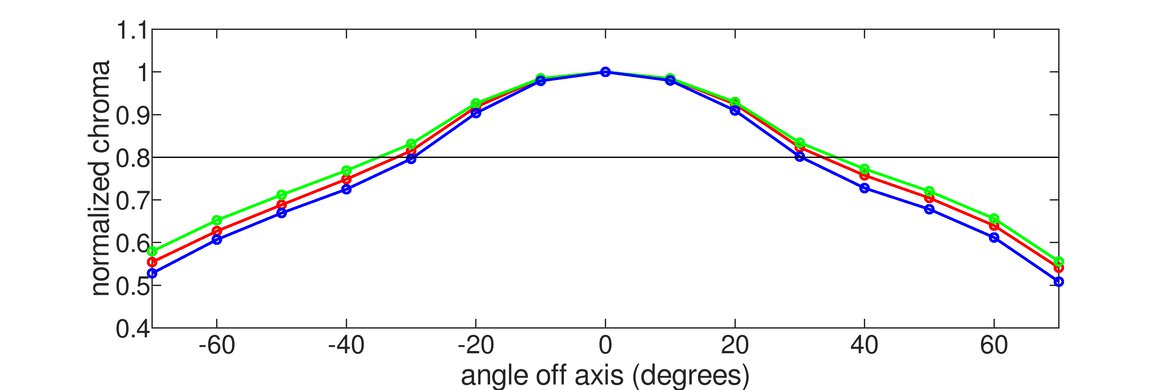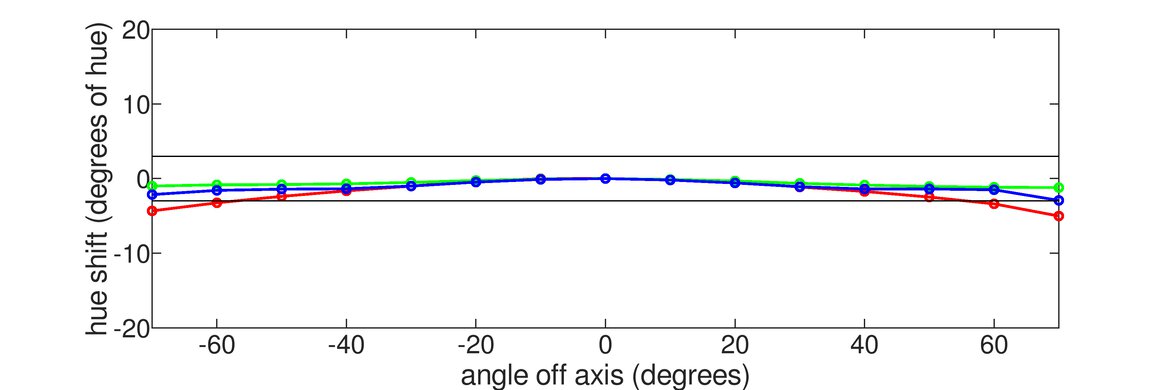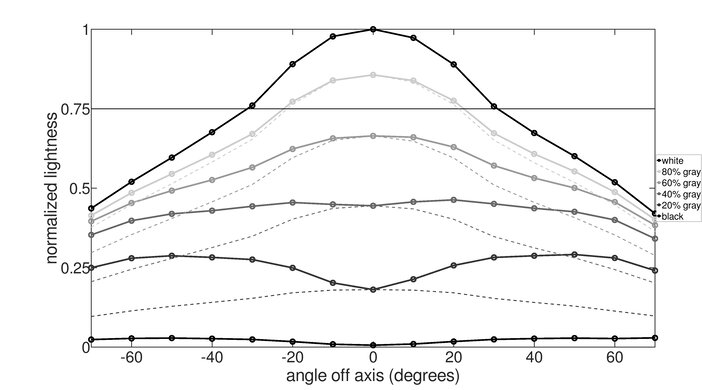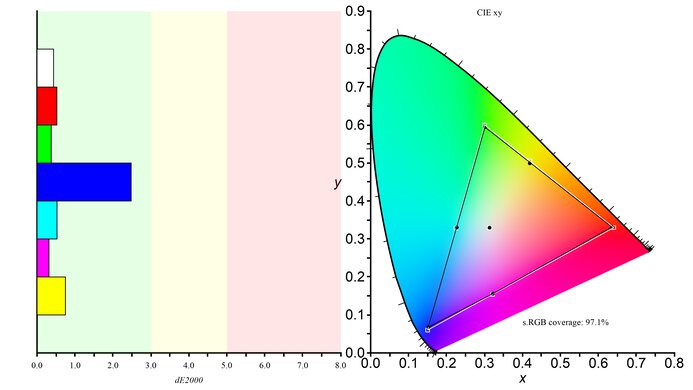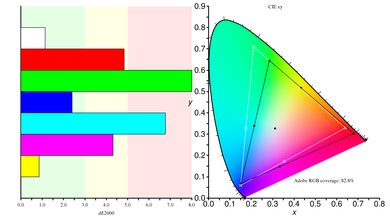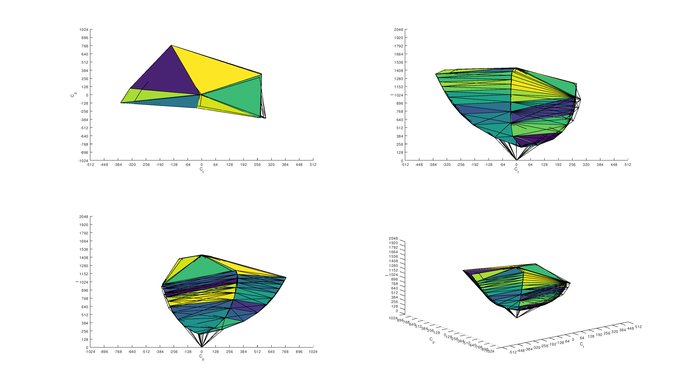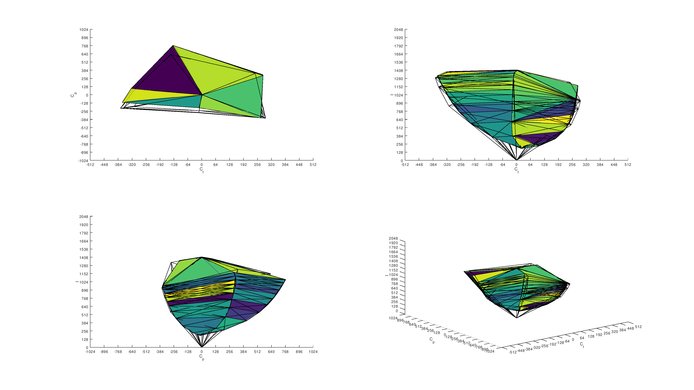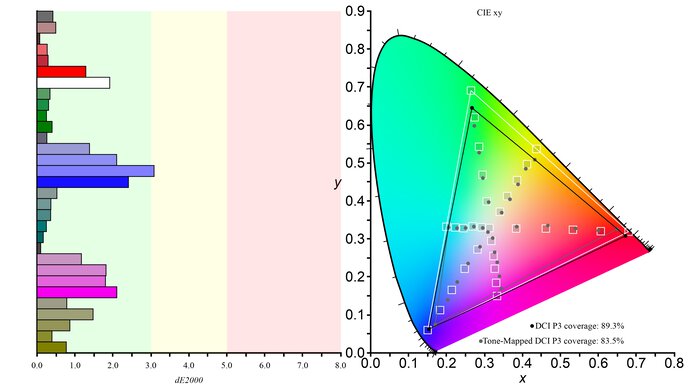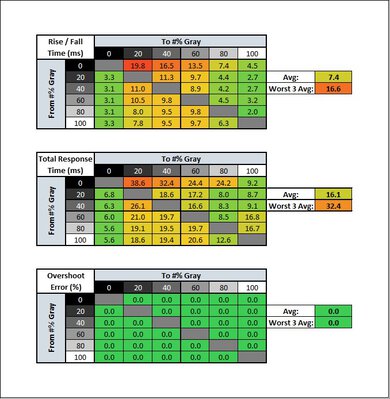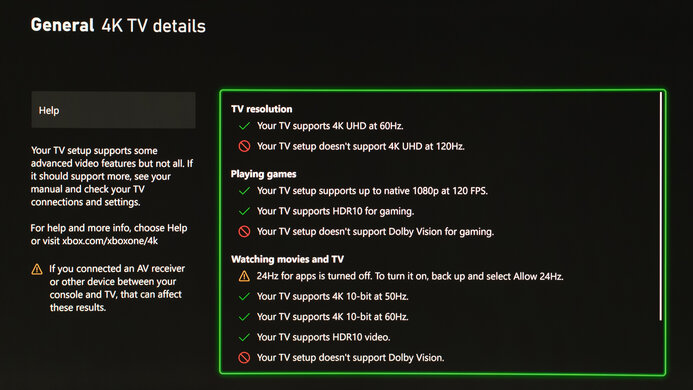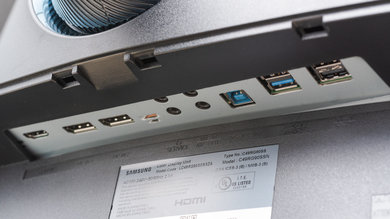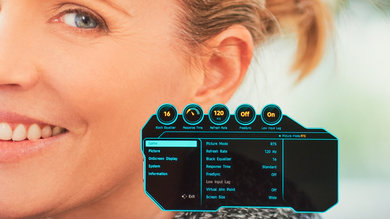The Samsung CRG9 is a good super ultrawide monitor. Its 32:9 aspect ratio provides plenty of space for an immersive gaming experience and allows you to work comfortably with multiple windows opened side-by-side. It has good reflection handling and gets very bright, enough to overcome glare with ease. Fast-moving scenes look clear and smooth, as it has a high refresh rate and quick response time, and it supports variable refresh rate technology to reduce screen tearing. Unfortunately, despite having a VA panel, its contrast ratio is only decent, and its edge-lit local dimming doesn't improve black level by much. Also, black uniformity is bad on our unit, although your experience may vary. Viewing angles are sub-par; however, the screen's curvature helps with visibility on the sides. Lastly, it can deliver a pretty good HDR experience thanks to its wide color gamut and high peak brightness.
Our Verdict
Overall, the Samsung CRG9 is a good monitor for most uses. It delivers a great gaming experience, as it has excellent low input lag and impressive motion handling. Its large, high-resolution screen is excellent for office use or media creation, allowing you to have multiple windows opened side-by-side. Unfortunately, the image degrades at an angle, and due to the large size of the display, it has limited ergonomics.
- Excellent SDR and HDR peak brightness.
- Large screen size.
- Good reflection handling.
- Sub-par viewing angles.
- Limited ergonomics due to the monitor's size.
The Samsung CRG9 is a good office monitor. The wide, high-resolution screen is great for multitasking, and it supports Picture-by-Picture, allowing it to display images from two sources at once. It also has excellent peak brightness and great reflection handling, so glare won't be an issue even in the brightest settings. Unfortunately, the image degrades when viewed at an angle, and due to the large display, it has limited ergonomics.
- Excellent SDR and HDR peak brightness.
- Large screen size.
- Good reflection handling.
- Sub-par viewing angles.
- Limited ergonomics due to the monitor's size.
The Samsung CRG9 is great for gaming. It has impressive motion handling due to its fast response time, resulting in very clear motion. It also has excellent low input lag at its native refresh rate, and it supports FreeSync to reduce screen tearing, though only over DisplayPort. Unfortunately, the image degrades at an angle, so it isn't ideal for co-op gaming.
- Large screen size.
- High refresh rate.
- Great response time.
- VRR support.
- Limited contrast.
The Samsung CRG9 is good for media consumption. The huge screen delivers an impressive movie experience, but it has only a decent contrast ratio and bad black uniformity, so it isn't great in a dark room. It has great reflection handling, though, and it gets extremely bright, making it a good choice for well-lit rooms. Unfortunately, the image degrades at an angle, so it isn't as well-suited for sharing content with others.
- Excellent SDR and HDR peak brightness.
- Large screen size.
- Good reflection handling.
- Sub-par viewing angles.
- Limited contrast.
The Samsung CRG9 is good for media creation. It has a huge amount of screen real estate, so you can spend more time creating, and less time scrolling and zooming. Unfortunately, it has narrow viewing angles and limited ergonomics, so it isn't a good choice for sharing the screen with clients or coworkers.
- Excellent SDR and HDR peak brightness.
- Large screen size.
- Good reflection handling.
- Sub-par viewing angles.
- Limited ergonomics due to the monitor's size.
The Samsung CRG9 is decent for HDR. It displays a wide range of colors and gets bright enough to make highlights pop for a vivid HDR experience. It also has a decent native contrast ratio that makes blacks look fairly black, but unfortunately, its local dimming feature doesn't do anything to further improve it. There's also a lot of blooming around bright objects with the local dimming on.
- Displays wide color gamut.
- Great HDR peak brightness.
- Edge-lit local dimming.
- Bad black uniformity.
- Limited contrast.
Changelog
- Updated Feb 17, 2023: Added text in the macOS Compatibility and Console Compatibility boxes and clarified text throughout as part of Test Bench 1.2.
- Updated Feb 17, 2023: Updated to Test Bench 1.2, resulting in changes to the results and scores with the Response Time and Input Lag. Added tests for Console Compatibility and macOS compatibility and made minor changes to other tests, which you can see in our Changelog.
- Updated Nov 05, 2020: Updated review for accuracy and clarity.
- Updated May 15, 2020: Converted to Test Bench 1.1.
Check Price
Differences Between Sizes And Variants
We tested the 49" CRG9, model code LC49RG90SSNXZA, which is the only size available. There's also a Costco variant of this monitor, the LC49RG92SSNXZA. It appears to have the same specs, and we expect it to perform the same.
| Model | Size | Resolution | Refresh Rate |
| C49RG9 | 49" | 5120x1440 | 120Hz |
If someone comes across a different type of panel or if their CRG9 doesn't correspond to our review, let us know, and we'll update the review. Note that some tests, like the gray uniformity, may vary between individual units.
The C49RG9 we tested was manufactured in May 2019.
Popular Monitor Comparisons
The Samsung CRG9 is a good ultrawide monitor, but unless you're specifically looking for a monitor with this aspect ratio, there are better options out there.
See our recommendations for the best ultrawide gaming monitors, the best gaming monitor size, the best curved gaming monitors, and the best 34-49 inch monitors.
Overall, the Samsung Odyssey G9 C49G95T is a bit better than the Samsung C49RG9/CRG9, mainly due to its higher refresh rate and lower input lag. However, the CRG9 has significantly less overshoot when running at its maximum refresh rate even though its response time is slightly slower, and it gets much brighter in SDR.
The Samsung CRG9 is a bit better than the Samsung C49HG90/CHG90. The CRG9 has a higher resolution screen, flicker-free backlight, and a faster response time. The CHG90 has a slightly higher refresh rate, but this doesn't add much.
The Samsung Odyssey Neo G9/G95NC S57CG95 is a higher-end and better monitor than the Samsung C49RG9/CRG9. The G95NC has a bigger screen with a higher resolution for a more detailed and immersive gaming experience. The G95NC also has a much higher 240Hz refresh rate, and combined with its faster response time, gaming feels smoother. Lastly, the G95NC delivers better picture quality thanks to its Mini LED backlighting and superior local dimming, so it displays deeper blacks alongside bright highlights with less blooming.
Although they use different panel technologies, the Samsung C49RG9/CRG9 is slightly better than the LG 49WL95C-W for most uses, and is much better for gaming. The LG has better viewing angles, which might be better in some cases, but the Samsung is significantly brighter, especially in HDR, and it has a better contrast ratio. The CRG9 is also much better than the LG for gaming, as it has a faster refresh rate, much faster response time, lower input lag, and it supports FreeSync.

We buy and test more than 30 monitors each year, with units that we buy completely on our own, without any cherry-picked units or samples. We put a lot into each unbiased, straight-to-the-point review, and there's a whole process from purchasing to publishing, involving multiple teams and people. We do more than just use the monitor for a week; we use specialized and custom tools to measure various aspects with objective data-based results. We also consider multiple factors before making any recommendations, including the monitor's cost, its performance against the competition, and whether or not it's easy to find.
Test Results

The Samsung CRG9 has a sleek but simple design. The borders are thin on three sides while the bottom bezel is just slightly thicker. The stand is wide, but it's quite small considering the size of the screen. There's a small ring of LEDs where the stand connects to the screen.
The overall build quality is great. Not much has changed from the Samsung C49HG90/CHG90; it's still a solid, well-built monitor, and you won't have any issues with it.
This monitor has alright ergonomics, and it's mainly limited by its super ultrawide format. You can still swivel it a bit, which is a nice addition to a monitor of this size.
The back is plain but looks good. There's a ring around the back of the stand mount that can light up. There's a small hole at the bottom of the stand for cable management, and there's a headphone hook near the top. It can also be VESA-mounted, but there's no quick-release feature. VESA mounting requires the special adapter that comes included.
The stand is quite a bit smaller than the Samsung C49HG90/CHG90's. It supports the monitor well but doesn't completely prevent it from wobbling.
The controls are identical to those found on the Samsung C49HG90/CHG90. There's a joystick to navigate the OSD, and it works very well. There are also three buttons that allow you to switch between different settings presets.
The local dimming feature is very similar to the Samsung Samsung C49HG90/CHG90 and Samsung CHG70. It's edge-lit and has only 10 dimming zones, so it doesn't have very tight control over the dimming areas. In some HDR scenes, though, it does help to boost the peak brightness of the display. There's an automatic mode for the local dimming, which turns local dimming on automatically in HDR content.
The Samsung CRG90 has excellent peak brightness in SDR and is one of the brightest monitors we've tested. There's some variation in brightness with different content, which may be distracting in some cases. The brightness seems to decrease a little bit over time. After displaying our test pattern for 10 minutes, the brightness dropped from 620 cd/m² to 590 cd/m² in the 100% sustained window.
We measured the SDR peak brightness in the 'RTS' Picture Mode, with Local Dimming enabled and Backlight set to max.
The HDR brightness is great. It easily gets bright enough to make small highlights stand out for a vivid HDR experience. The EOTF also follows the target curve well until there's a sharp roll-off at the peak brightness, meaning details in bright scenes are lost.
These results are from the 'RTS' Picture Mode with Local Dimming enabled and the backlight at its max.
Like most displays with VA panels, the Samsung CRG9 has bad horizontal viewing angles, almost identical to the Samsung C49HG90/CHG90. Viewing off-axis, the black levels raise and the brightness decreases, causing the image to appear washed out, and colors lose accuracy.
The Samsung CRG9's vertical viewing angle is disappointing, but this is expected from a VA panel. When viewing from either above or below, the black levels increase rapidly and brightness drops off, causing the image to wash out. At wider angles, colors lose accuracy and shift.
The Samsung CRG9 has bad black uniformity, but this can vary between individual units. There's noticeable clouding across the entire image. With local dimming enabled, the areas far from the test cross are dimmed and look good, but due to the limited number of dimming zones, the area around the cross remains lit.
The accuracy before calibration is great. It has an sRGB picture mode that locks most colors to the sRGB color space, so they aren't oversaturated. However, it doesn't result in perfect image accuracy as the white balance, color temperature, and gamma are all still slightly off. The sRGB mode locks only a handful of settings, and other modes like 'Custom' are still good but have oversaturated colors.
After calibration, the Samsung CRG90 has remarkable accuracy. Gamma follows the target curve almost perfectly, and most color and white balance errors are corrected.
The Samsung CRG9 has an outstanding SDR color gamut. It has essentially perfect coverage of the sRGB color space used in most content, and great coverage of the wider Adobe RGB color space, which is mostly used for photo editing.
Exceptional SDR color volume. It can't produce dark, saturated colors as well as the Samsung C49HG90/CHG90, due to the lower contrast ratio.
This monitor has good reflection handling, slightly better than the Samsung C49HG90/CHG90, but not quite as good as the Dell U4919DW. You won't have any issues using it in a bright room.
The refresh rate is limited over HDMI due to bandwidth limitations. If you want a higher refresh rate over HDMI, you'll need to use a lower resolution, like 3440x1440.
The Samsung CRG9 natively supports FreeSync VRR to reduce screen tearing, but it only works over a DisplayPort connection, and G-SYNC compatibility doesn't work.
| Overdrive Setting | Response Time Chart | Response Time Tables | Motion Blur Photo |
| FreeSync On | Chart | Table | Photo |
| Standard | Chart | Table | Photo |
| Faster | Chart | Table | Photo |
| Fastest | Chart | Table | Photo |
The Samsung C49RG9 has an unremarkable response time at 120Hz. Most transitions have a slow total response time, leading to black smearing. If you have VRR enabled, you can't use any of the overdrive settings. If you disable VRR, then the 'Fastest' setting has the best performance.
| Overdrive Setting | Response Time Chart | Response Time Tables | Motion Blur Photo |
| FreeSync On | Chart | Table | Photo |
| Standard | Chart | Table | Photo |
| Faster | Chart | Table | Photo |
| Fastest | Chart | Table | Photo |
As this monitor's max refresh rate is 120Hz, the results for the response time at 120Hz are the same as the max refresh rate.
| Overdrive Setting | Response Time Chart | Response Time Tables | Motion Blur Photo |
| FreeSync On | Chart | Table | Photo |
| Standard | Chart | Table | Photo |
| Faster | Chart | Table | Photo |
| Fastest | Chart | Table | Photo |
The response time is disappointing at 60Hz as there's more blur trail than at 120Hz. If you don't use VRR, the 'Faster' overdrive setting has a quicker total response time and less overshoot than 'Fastest', resulting in better motion handling.
The Samsung CRG9 doesn't have an optional Black Frame Insertion feature.
The backlight is completely flicker-free, which is great. The flicker seen in the 0% measurement is noise and isn't visible. This is a welcome change over the Samsung C49HG90/CHG90, which had noticeable flicker at all brightness levels.
Unfortunately, like other Samsung monitors like the Samsung Odyssey Neo G9/G95NA S49AG95, there's a noticeable flicker at lower frame rate signals with VRR enabled. It's especially visible in darker scenes, and Samsung has added a VRR Control setting through a firmware update to reduce it.
The Samsung CRG9 has low input lag when gaming with a 120Hz signal, but unfortunately, it increases a lot with a 60Hz signal. For the lowest input lag, you need to match the refresh rate in the monitor's settings to the frame rate of your source. For example, if you're playing a 120Hz game and have VRR disabled, you also need to make sure that the monitor's refresh rate is at 120Hz. Also, enabling the VRR Control setting adds about 10 ms of input lag.
The ultrawide 32:9 aspect ratio and 5120x1440 resolution deliver an outstanding amount of screen real estate to work with. This is an outstanding monitor for multitasking or a more immersive gaming experience. The higher resolution of the CRG9 makes a noticeable difference compared to the Samsung C49HG90/CHG90.
The Samsung CRG9 has decent compatibility with the PS5. It downscales a 4k signal, which results in a sharper image than a native 1440p signal, but it doesn't support 1440p or 4k at 120Hz. Also, because the PS5 doesn't support ultrawide gaming, you'll see black bars on the sides.
The Samsung CRG9 has decent compatibility with the Xbox Series X. It downscales a 4k signal, which results in a sharper image than a native 1440p signal, but it doesn't support 1440p or 4k at 120Hz. Also, because the Xbox doesn't support ultrawide gaming, you'll see black bars on the sides.
Unlike the Samsung C49HG90/CHG90, there's no Mini DisplayPort connection. Instead, there's an additional DisplayPort 1.4 port. There's a 3.5mm Microphone In port, which acts as a passthrough, and the Microphone Out port must be connected to a PC for it to work. There's also a headphone jack, and you can control the volume through the monitor's OSD.
Two of the USB ports support USB 3.2 speeds, while the other two are USB 2.0.
This monitor works well with macOS. There's noticeable flickering that can be reduced by enabling VRR Control, but other than that, both HDR and VRR work without issue. If you're using a MacBook, windows return to their original position when waking the laptop up from sleep, but not when you reopen the lid after closing it.
There are very few additional features on this monitor. It doesn't have internal speakers, but it does support HDR10. It supports Picture-by-Picture (PBP), allowing you to work with two sources on the screen at once, but unlike the Dell U4919DW, there's only one upstream USB connection, so you have to either buy a separate keyboard and mouse switch or have two sets. For gaming, there's an option to add a virtual crosshair to any game.












